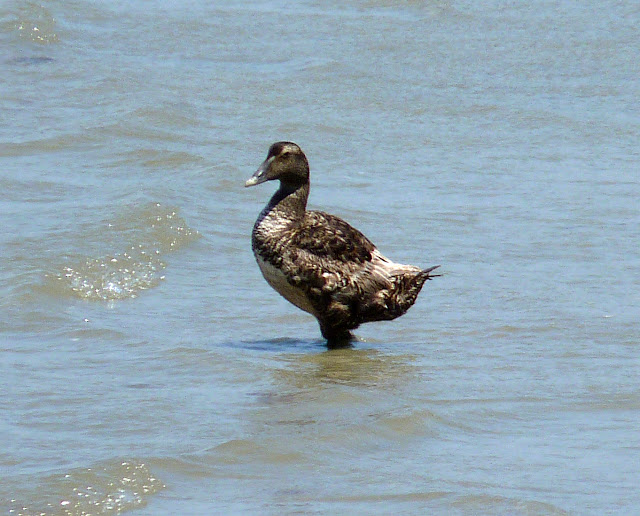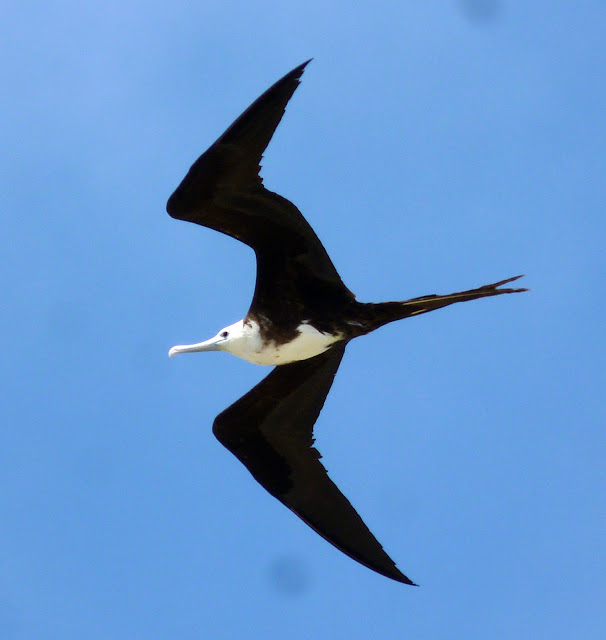I knew a lady who came from Duluth
She got bit by a dog with a rabid tooth
For some reason the word 'Duluth' always brings to my mind those Nirvana lyrics from "Lake of Fire."
Well from this trip I've learned some new associations, and as it turns out, "Lake of Ice," would apply better to this city.
My presentation at
the Society of Wetland Scientists annual meeting brought me up to the largest port on the Great Lakes and I managed to work in some birding during the preceding weekend.
It turns out the Park Point area in which I was staying had just experience an epic warbler fallout with 26 species spotted in a morning a few blocks away! I only caught the tail end of the warbler fest, but it was crazy seeing Canada, Wilson's, Nashville Warblers and Chestnut-sided Warblers flitting around in urban neighborhood shrubs. Most shocking was the Mourning Warbler I saw scurrying around the mulched plant beds of a downtown city park! Such birds often require special effort and/or moderate to exceptional luck to find in North Carolina.
This new perspective on which warblers are locally "common" (i.e. those listed above) and which are very rare (i.e. Black-throated Blue, Prairie, Yellow-throated, etc.) was strange, but even more so was the weather. It would be 72 F and gorgeous and then the wind would shift and it would suddenly be 45 F and impenetrably foggy.
 |
| A gorgeous day at Duluth Beach |
The mercurial climate is a result of Duluth's position on the shore of Lake Superior, which holds 10 percent of the worlds supply of fresh water and keeps it refrigerated at a refreshing 39 F yearround. The lake has it's own beaches, sand dunes, ship wrecks, SCUBA divers, surfers, and "sea" birds!
 |
| A gull and shorebirds nowhere near the ocean |
The shorebirding on Duluth Beach is pretty slow by North Carolina standards. The first Wilson's Plover since the 1980's was found here the week before I arrived, but all I could turn up were a few flocks of Sanderlings and Ruddy Turnstones (and my count of 12 turnstones was flagged by the ebird filters as unusually high).
 |
| Ruddy Turnstones |
Grebing was more exciting...well I was excited to see these grebes anyway. Rednecks (the kind with wings) are not that easy to find in the Southeast.
 |
| Red-necked Grebes |
You know I hate to admit it, but more fun than birding Lake Superior, was paddling out on it to the Apostle Islands Sea Caves. The wonderful host I found on couchsurfing.com, Deanna, also happened to be a pro kayak trip leader and took me out for free!
 |
| Apostle Island Sea Caves |
A combination of wave erosion and uplift created the nooks, arches, tunnels and chasms on this sandstone cliff face that we explored by kayak. Awesome.
Thanks Deanna!!
It's amazing the nice people you can meet on the internet. Another was Frank of Minneapolis, who I found through birdingpal.org.
He picked me up and we headed up to the famous Sax-Zim bog where I foolishly hoped to find some of the uncommon boreal specialties, such as Gray Jay, Great Gray Owl and Boreal Chickadee. I guess they were around there someplace, but apparently finding them is much easier in winter. The unfamilair songs of Mourning, Connecticut and Nashville Warblers were a treat though.
 |
| Mourning Warbler (stick face) |
And I got two lifers!:
 |
| Black-billed Magpie |
and...
 |
| Yellow-bellied Flycatcher |
So it ended up being a successful day! Thanks Frank!
Hilariously, the "best" bird (in terms of local rarity) I saw during my week a Northern Mockingbird. Apparently Duluth is farther north than this "northern" bird usually cares to stray (but don't be surprised if they become much more common over the next few decades *wink*).
 |
| Northern Mockingbird |
So I've showcased some pretty poor photos in this post, but here's a better one...
 |
| American Bittern |
I don't think I'll ever get tired of seeing bitterns.
I managed to sneak out early one morning to find my lifer Trumpeter Swans, but beyond that, most of the birds came on Powerpoint slides.
Duluth was plenty cold for me in June, but I guess I'll have to go back one winter to see Goshawks and Hawk-Owls.














